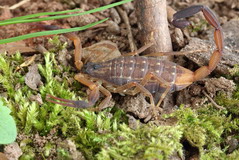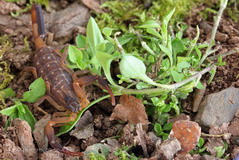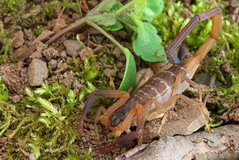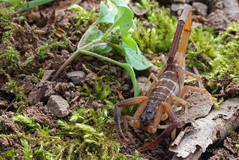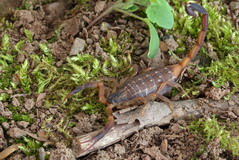- Akravidae
- Bothriuridae
- Buthidae
- Babycurus jacksoni
- Centruroides gracilis
- Centruroides meisei
- Centruroides nigrenscens
- Hottentotta hottentotta
- Lychas mucronatus
- Lychas scutilus
- Parabuthus pallidus
- Parabuthus raudus
- Parabuthus villosus "black"
- Caraboctonidae
- Chactidae
- Chaerilidae
- Euscorpiidae
- Hemiscorpiidae
- Iuridae
- Pseudochactidae
- Scorpionidae
- Superstitioniidae
- Troglotayosicidae
- Typhlochactidae
- Vaejovidae

Lychas scutilus (C.L. Koch, 1845)
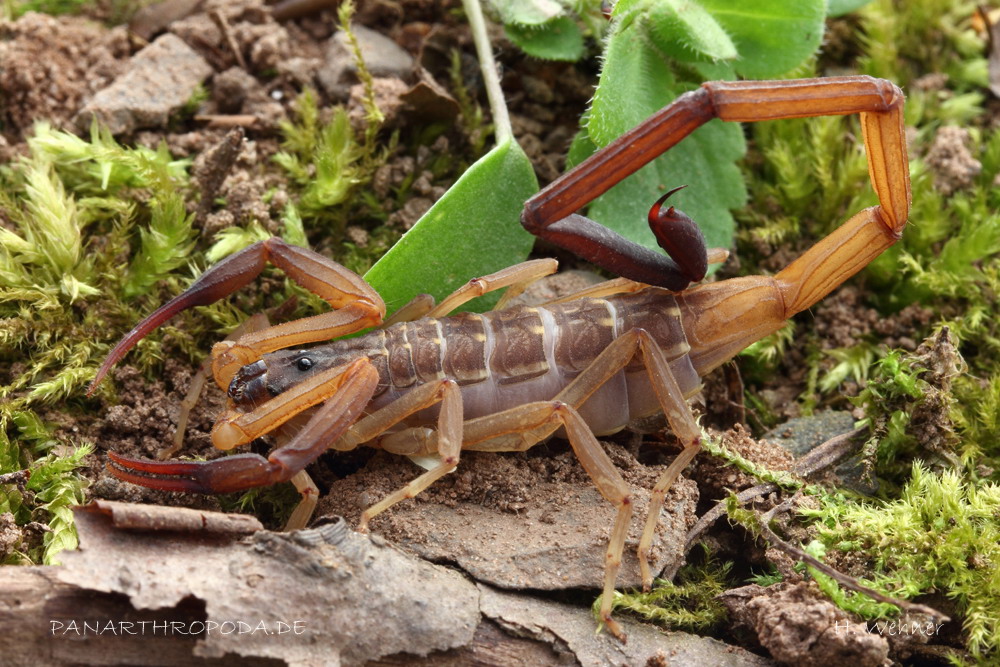
Adult male
Origin and occurrence
The species Lychas scutilus lives in parts of the wet tropical zone of Southeast Asia. It occurs in Myanmar, Thailand, Malaysia and Indonesia. It is still not totally clear on which of the Indonesian Islands this species appears.
Appearance and sexual dimorphism
Lychas scutilus is one of the medium sized species of scorpions. The females will reach between 4 to 6,5 cm in bodysize, whereas the males, due to their greatly elongated metasoma, will reach 6 to 8,5 cm. The species is colored in a gray orange. The last segements of the metasoma including the telson and the chelae are colored in a reddish brown. In addition, the pedipalps and the legs are slightly marbleized.
As mentioned above, the males have a greatly elongated metasomas, with the help of which one can identify adulthood quickly. The telson is elongated as well. The females will stay behind in body size but will get bulkier.
The juveniles can not be sexed by pectinal teeth properly. Females have 15 - 18 and males 16 - 19 pectinal teeth, which offers a too wide cross over for proper sexing (Kovarik 1995).
Behavior
Lychas scutilus is a calm and much inaggressive species of scorpion. The specimen will flee when disturbed, but when kept one should have its high capability for speed in mind. I have never seen any attempts to sting. In addition they can be kept in groups, since the potential for aggression within a group is low, too. The animals will share hideouts and live together in large groups. Juveniles make an exception since they are prone to cannibalism, especially during molts.
As bark-dwellers they prefer to remain on or under bark. This species climbs very well and often - as all bark-scorpions do - and so several opportunities for climbing should be present in the container in which they are kept.
Keeping conditions
For a small group of Lychas scutilus, about 5 to 6 specimen, a container measuring 20x20x20cm is sufficient. This species should not be kept too warm. Temperatures between 25°C and 28°C are enough and should not be exceeded in my opinion. Simple humus can be used as substrat and should be kept wet all the time to assure a constantly high humidity. Therefore one must keep an eye on left over prey because it will start to mold quickly under those contitions.
To offer hideouts and places to climb, the container should be fitted with upright pieces of bark, that should be stacked next to each other. When kept sufficiently moist, offering a bowl for drinking is not necessary.
Mating and raising the young
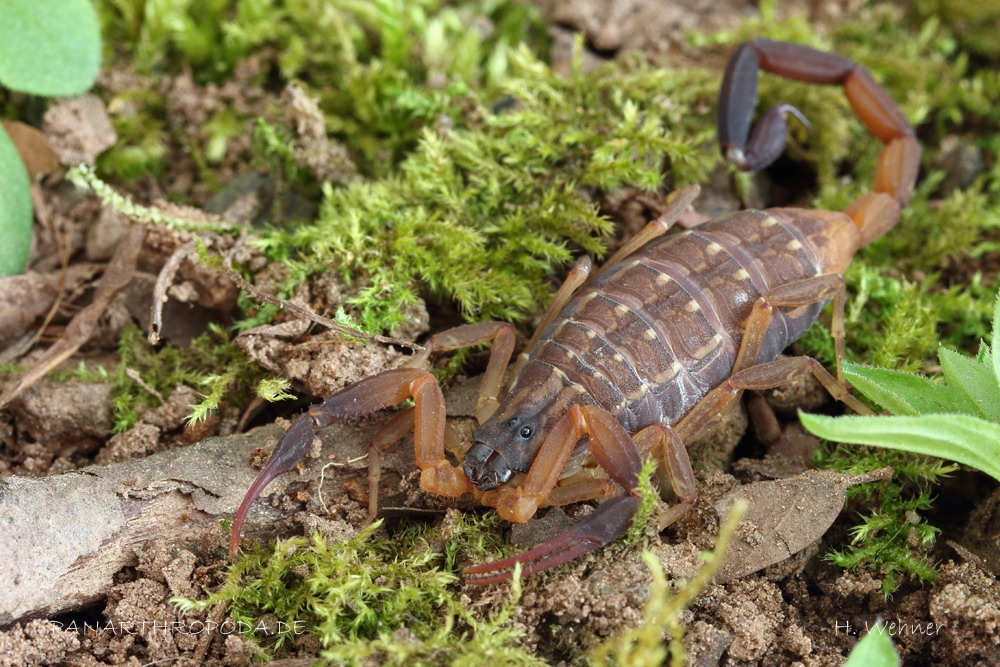
Gravid female
Whereas the raising of the young is not that problematic, breeding Lychas scutilus is. Since the litter sizes of females in captivity are not that high it does not appear that the optimal keeping conditions have been found (or other important factors have not been taken into account yet). Mating itself is no problem, it will usually start immediately when male and female are put together, when always kept together mating will occur in any case. It is still unclear whether simulating a dry period is necessary to make the females litter. One of my females littered 11 young after a short period of dryness (4 weeks). The gestation time was about 5 to 6 months long and has eventually even been elongated by the dry period because littering only occured after the dry spell. On the other hand another female littered 11 young in a shorter time without a dry period, which makes me doubt, whether a dry period is helpful. Further observations have to be made in this matter.
As stated before, raising the young is no problem. They will molt into second instar within days on the mother's back and leave there a few days later. As soon as this, they will prey on small crickets. Whereas they can be kept at the same temperatures as the adults, the high humidity seemes to harm their growth. Instead of moistening the substrat, one could offer a small plastic can containing a moist sponge. In my case, the young in containers with moistened substrat did not molt and only fed poorly, but developed superbly with the change to the sponge-method. Nevertheless one can now and then moisten the sides of the container to offer drinking-opportunities to the animals. To avoid cannibalis, the young should be raised seperately.
Since the animals will molt head down upright pieces of bark shoud be offered. When kept properly, the young can reach adulthood within 6 months. The count of molts can vary, some males are adult in 5. and 6. instar, some females in 6. or 7.
A. Weide
